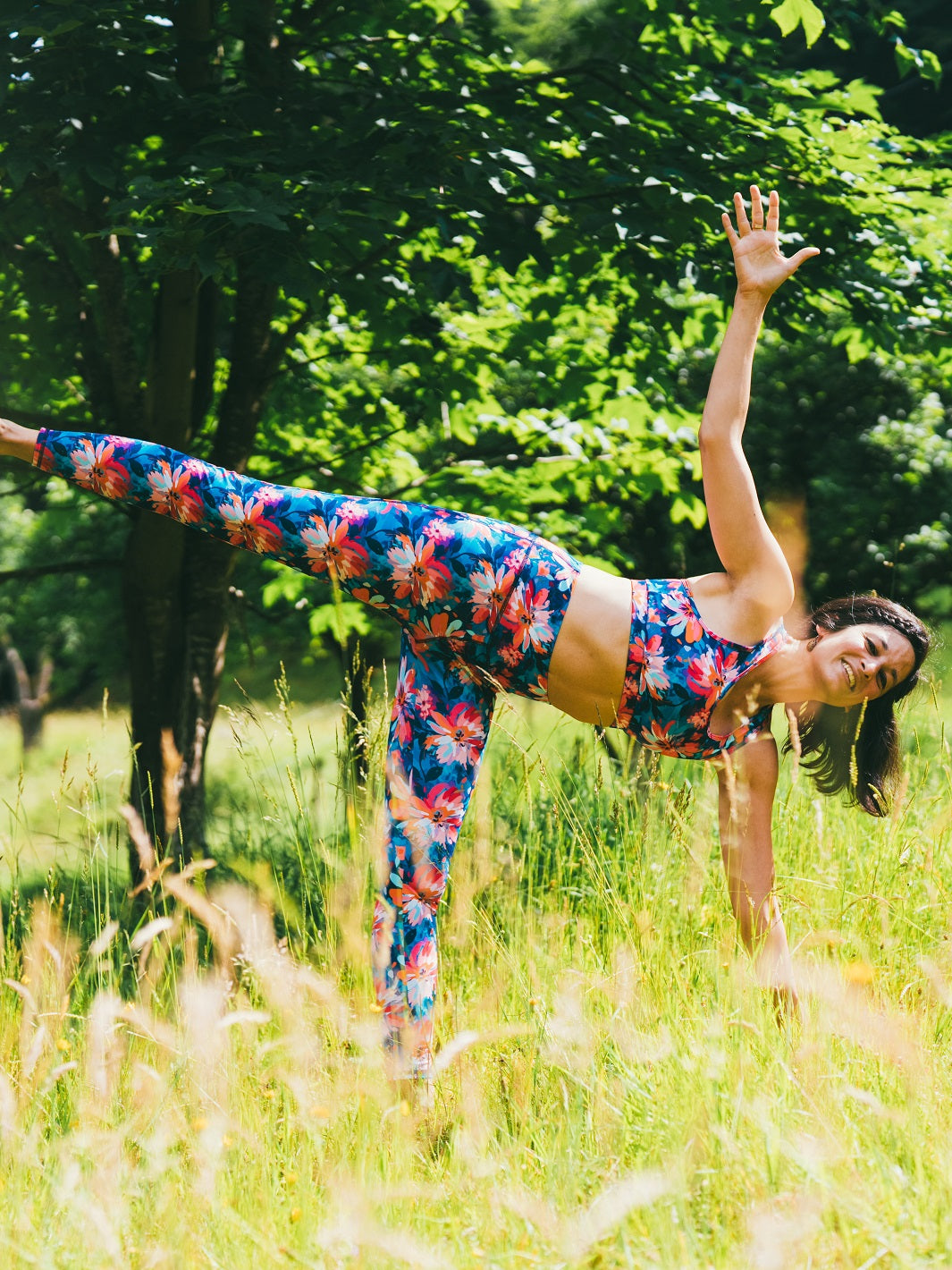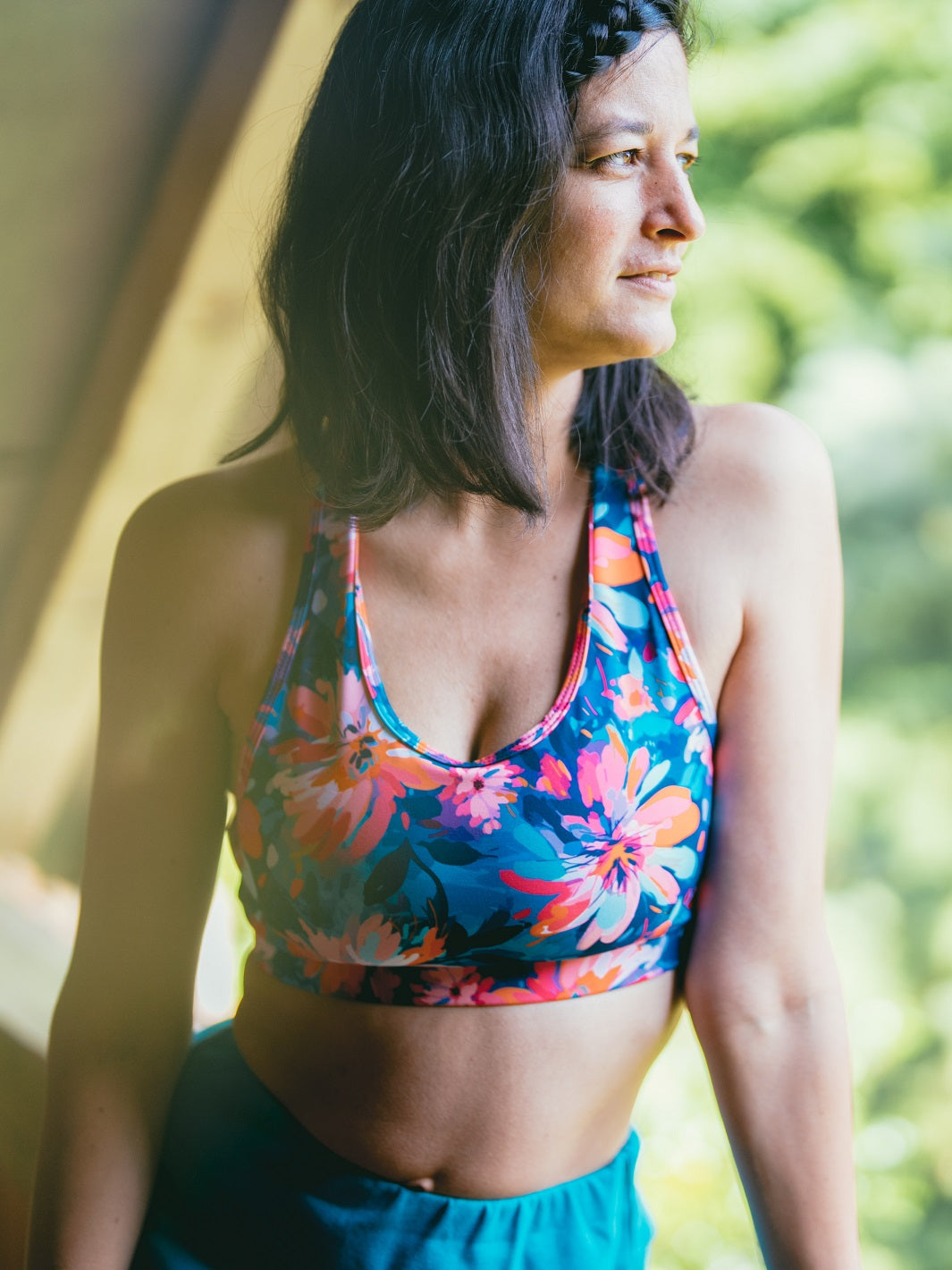A clever blend of Ashtanga Yoga, Iyengar Yoga and Bikram Yoga, Power Yoga mainly differentiates itself from its counterparts by its high intensity and its more fun aspect.
In fact, the lessons are set to music and it is not uncommon to leave a few milliliters of sweat there.
Rarely identical from one session to another, the sequences of postures in Power Yoga also incorporate fitness and Pilates exercises.
Although described as "ignorant bodybuilding" by K. Pattabhi Jois, Power Yoga is not totally disconnected from the philosophy of yoga because it includes the famous breathing and relaxation exercises so appreciated by yogis.
Unlike Ashtanga, where postures and sequences are predefined, power yoga offers more flexibility in practice, allowing teachers to adapt the sequences according to the group or the objectives of the session.
This creative freedom is one of the reasons for the growing popularity of this discipline.
Through power yoga, traditional yoga philosophy meets the dynamics of modern fitness classes.

1. The origins of Power Yoga
T There are several schools of Power Yoga, created simultaneously in the 1990s.
The "Yoga Journal", however, names Beryl Bender Birch as the founder of "original" Power Yoga and her book of the same name was a bestseller in 1999.
Bryan Kest is another key figure in Power Yoga. Following the advice of his father, a doctor, he began practicing yoga at the age of 15 and then went to India to follow the teachings of K. Pattabhi Jois, the founder of Ashtanga Yoga.
Upon his return to the United States, Bryan Kest founded his own Power Yoga school.
He is also known for being one of the pioneers in giving yoga classes on the principle of donation.
Finally, Larry Schultz, also a disciple of K. Pattabhi Jois, also created a form of Power Yoga called “Rocket Yoga”.
The series of postures he offers in his discipline mixes asanas from the first, second and third series of Ashtanga, which earned him the nickname "Bad Man of Ashtanga Yoga".
Unlike traditional Ashtanga teaching where a posture becomes accessible only when the previous one has been perfectly executed, Larry Shultz found it important that students have access to all postures from the outset.

2. Progress of a Power Yoga session
A power yoga session can vary depending on the teacher, but in general it follows a similar structure to other forms of yoga, while incorporating elements of strength training and cardio.
a. Warm-up
The session often begins with a few minutes of conscious breathing, called pranayama , to center the mind and prepare the body for the effort. Then, a dynamic warm-up is performed, often based on sun salutations, a fluid sequence of postures that activates the muscles and prepares the body for the more intense work to come.
b. The heart of the session
The core of the session is based on a rapid sequence of postures (asanas) that work the entire body. Unlike other forms of yoga where postures are held for a long time to promote relaxation, power yoga focuses on rapid transitions and high intensity. This allows you to:
- Strengthen muscles , especially the core, legs and arms.
- Improve cardiovascular endurance , as the sequences are designed to keep the heart rate elevated.
- Improve flexibility , through stretching postures performed in a context of continuous movement.
Poses used may include planks , handstands , warriors , and other positions that deeply work the stabilizing muscles and overall body endurance.
c. Final relaxation
Although power yoga is often perceived as an intense physical exercise, a typical session always ends with a relaxation phase. After the effort, returning to calm is important. The last minutes of the session are generally devoted to relaxing postures, often lying down, and deep breathing. This phase allows the body to recover and the mind to relax after the intense effort.

3. Main characteristics of Power Yoga
Power yoga is distinguished from other forms of yoga by several specific aspects.
a. Physical intensity
One of the most striking features of power yoga is its physical intensity. It is designed to work the body in a comprehensive way, combining muscle strengthening and cardio. The rapid transitions between postures require constant concentration and physical effort, making it a particularly demanding form of yoga.
b. Adaptability
Power yoga is less rigid than some traditional forms of yoga. The sequences can be modified or adapted according to the level and needs of the participants. This allows everyone to progress at their own pace and adjust the postures according to their physical abilities.
c. Link with fitness
Due to its dynamic and intensive nature, power yoga is often compared to a fitness class. It attracts many athletes or people looking for an alternative to traditional workouts such as running or CrossFit, while benefiting from the mental and spiritual aspects of yoga.
d. Less emphasis on spirituality
While power yoga remains rooted in the core principles of traditional yoga (like breathing and mindfulness), it places less emphasis on spirituality. It is primarily a physical exercise, although some practitioners may find a meditative aspect through movement.
4. What personality type is Power Yoga ideal for?
Power yoga is not for everyone. It is aimed specifically at certain categories of people, depending on their goals and personality.
a. Fitness enthusiasts
If you are someone who enjoys a physical challenge, is looking to strengthen your muscles and improve your overall fitness , power yoga is perfect for you. Its combination of demanding postures and fast-paced movements provides an excellent workout for the entire body.
b. Active and dynamic people
Power yoga is designed for people who enjoy being on the move and are looking for a more dynamic yoga practice. If you find traditional forms of yoga too slow or static, power yoga, with its fast pace, might be a better fit for you.
c. People looking to improve their endurance
If your goal is to improve both your strength and endurance , power yoga is a great choice. The fluid flow of poses and the fast pace work both your muscles and your heart, which helps improve cardiovascular endurance.
d. People who want a less spiritual approach
Some people may be interested in the physical benefits of yoga, but may not feel drawn to the spiritual aspect. Power yoga, with its emphasis on physical training and less focus on meditation and spirituality, could be a good option for those who want to focus on the physical aspect of the practice.
Conclusion
Power yoga is an intense practice that combines strength, flexibility, and endurance while providing the relaxing benefits of traditional yoga. If you are looking for a form of yoga that combines both an intense physical workout and an opportunity for mental relaxation, power yoga may be for you.
Discover other types of yoga:





Leave a comment